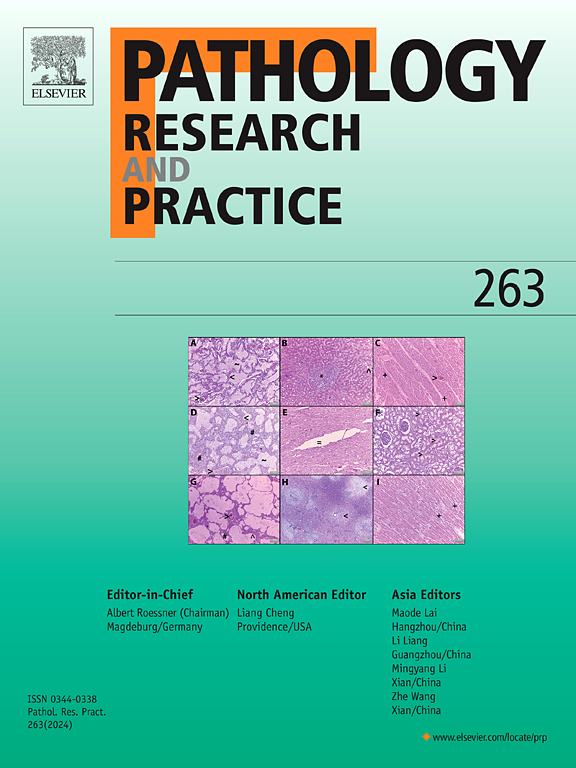Translating preclinical insights into clinical strategies: Targeting cancer stem cells and stemness in prostate cancer
IF 2.9
4区 医学
Q2 PATHOLOGY
引用次数: 0
Abstract
CSCs represent a unique group within the tumor microenvironment (TME) elevating the tumorigenesis. The cause of cancer recurrence can also be investigated in the function of CSCs possessing self-renewing capabilities and differentiation into various types of cells. Prostate cancer (PCa) is a malignant disease of the urogenital system characterized by aggressive behavior and heterogeneous nature due to the dysregulation of molecular pathways and the interactions among cells within the TME. The PCa can quickly become resistant to standard chemotherapy and other kinds of therapies such as radiotherapy along with ability to mediate immune evasion. The focus of biology has been on the molecular and cellular alterations in PCa. The CSCs have been recognized as potential biomarkers for predicting the outcome of prostate PCa. Furthermore, a positive correlation exists between CSCs and the metastatic growth and stemness of PCa. The existence of hypoxia enhances the stemness of PCa, and CSCs play a role in dormancy. Genomic and epigenetic elements, including non-coding RNAs, can influence CSCs and the advancement of PCa. Additionally, therapeutic agents and nanotechnology methods aimed at targeting CSCs have been developed to inhibit CSCs in PCa treatment.
求助全文
约1分钟内获得全文
求助全文
来源期刊
CiteScore
5.00
自引率
3.60%
发文量
405
审稿时长
24 days
期刊介绍:
Pathology, Research and Practice provides accessible coverage of the most recent developments across the entire field of pathology: Reviews focus on recent progress in pathology, while Comments look at interesting current problems and at hypotheses for future developments in pathology. Original Papers present novel findings on all aspects of general, anatomic and molecular pathology. Rapid Communications inform readers on preliminary findings that may be relevant for further studies and need to be communicated quickly. Teaching Cases look at new aspects or special diagnostic problems of diseases and at case reports relevant for the pathologist''s practice.

 求助内容:
求助内容: 应助结果提醒方式:
应助结果提醒方式:


